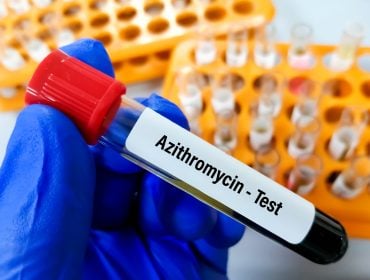Which STDs Are Tested for During a Pap Smear & Well-Woman’s Exam?
Going to the doctor or OB/GYN for an annual exam can be stressful and uncomfortable enough without having to add the confusion of what all is going on to the appointment. We walk you through what typically occurs at a well-woman’s exam and Pap smear so that you know what to expect and which STD tests to ask your doctor for if they aren’t done automatically.
What Is A Well-Woman’s Exam?

A well-woman’s exam is an exam that consists of multiple parts to help the doctor get a general look at a woman’s overall reproductive health. Well-woman’s exams are performed annually on women 18-years or older, whether or not they are sexually active, or women younger than 18 if they are sexually active. Typically, the patient’s weight and blood pressure are taken. The doctor or nurse asks questions regarding the patient’s health habits (smoking, drug use, alcohol intake, caffeine intake) as well as sexual habits (use of birth control and protection, how many partners they have had since their last visit, if they have had any STD testing done since their last visit or after their most recent partner, etc.). Family medical history is discussed, as well as current medications. You may also be asked about certain immunizations, like the HPV vaccines, during your visit.
During a well-woman’s exam, the medical professional will perform a breast exam and a pelvic exam. If you are over 21 years old, they will likely also conduct a Pap smear (also called a Pap test) to check for cervical cancer. After these exams, your doctor or nurse practitioner will likely discuss whether or not you are interested in birth control and is available to answer any questions you may have regarding contraception and sexual health.
Can Pap Smear Detect STD?
Breast Exams
Secure and Confidential
STD testing services
The fastest results possbile - available in 1 to 2 days
The doctor or nurse will check for breast cancer or abnormalities of the breasts by visually examining them and also palpating or gently feeling by pressing against each breast and the area near the armpits. The axillary region (armpit area) is palpated because there could be masses or swollen or enlarged lymph nodes there that indicate a problem. The doctor or nurse will suggest that the patient perform self-examinations of her breasts monthly to ensure that there are no lumps or atypical changes.
Mammograms are x-rays of the breasts. Mammograms are typically performed on women who are 40 and older and are done to screen for malignancies before they are large enough to be felt. Mammograms may be performed on women younger than 40 if cancer is prevalent in their family or to confirm whether or not masses detected via palpation are possibly malignant.
Pelvic Exams
Pelvic exams consist of three parts: A visual examination of the pelvic area is conducted, during which the doctor or nurse inspects the outer or external genitalia (the mons pubis, vulva (consisting of the labia majora and labia minora) and the clitoral hood) while the woman is laying back with her feet in foot-holds called stirrups. The doctor or nurse practitioner looks for abnormalities like discoloration, ulcers, genital warts, lesions, etc.
A bimanual exam is an exam performed using both hands to feel for structural abnormalities of reproductive organs that cannot be seen visually. This exam involves palpating the cervix and uterus. One hand is placed externally on the pubis, and the index and middle fingers of the other hand are inserted into the vagina to feel for placement, size and positioning of the uterus, as well as to feel for any abnormal masses.
A speculum exam is an exam performed using a speculum to get a visual of the vaginal canal. A speculum is a device that is used to keep the vagina open for inspection. This allows the doctor to observe the cervix, letting them see whether or not there are any abnormalities like warts, sores or discharge that is abnormal in color or texture. During a speculum examination, a Pap smear is often performed to test for cervical cancer.
Pap Smears: What They Are & Why They’re Done
A Pap smear is a test done starting at age 21 in which small samples of tissue are scraped from the cervix, from near the cervix and from approximately a centimeter inside the cervix and are sent off to a lab for testing. Abnormalities like pre-cancerous or cancerous cells are looked for during a Pap test. Pap smears are not painful tests, although some women find that they feel pressure and slight discomfort. Light bleeding may occur following a Pap smear and is considered normal.
HPV & Pap Smears
There are hundreds of strains of the Human Papillomavirus (HPV), a sexually transmitted infection. Some strains of HPV are known to cause cervical cancer or oropharyngeal cancer, some strains of HPV can cause genital warts, and many strains cause no apparent signs or symptoms at all and are cleared by the immune system after two or three years. The Centers for Disease Control and Prevention (CDC) estimate that there are 14 million new HPV cases each year in the United States.
If Pap test results are normal and cancerous cells are not found, women do not need to have another Pap smear done for three years unless their doctor discovers abnormalities during a well-woman’s exam that would warrant a Pap test to be done sooner. If pre-cancerous or abnormal cells are found, they can be frozen off via a method called cryotherapy. If cancer is discovered doctors can remove or destroy the affected part of the cervix. Cervical cancer can be fatal if not discovered and treated early, however, if it is caught in time it can be treated and cured before it progresses and spreads.
Wearing condoms can prevent both women and men from contracting HPV. There are also vaccine and immunization series available for men and women to prevent contracting certain cancer-causing strains of HPV.
Which STDs Are Tested For During A Well-Woman’s Exam?
Aside from HPV being tested for if abnormal cells were seen and a Pap smear was conducted, other sexually transmitted infections or diseases (STIs or STDs) can be tested for during your visit to the OB/GYN. Typically, STD tests are not conducted unless specifically asked for, and there are different tests for different STDs, so in order to get tested for multiple STDs, you will have to provide a blood and urine sample. Sometimes STDs signs and symptoms of STDs are obvious and your doctor will test you for specific STDs based on signs they see. For example, trichomoniasis is often accompanied by foul-smelling, yellow or green discharge, and genital herpes outbreaks are characterized by lesions or sores on or near the genitals. That being said, most cases of STDs are asymptomatic, meaning no signs or symptoms are present.
If you want to have an HIV test done at your well-woman’s exam, ask for it. Ask for all the STD tests you wish to have done to be completed. If you haven’t been tested in the past, it is important to get tested for as many common STDs are you can. Your doctor will be able to test you for HIV, hepatitis B and C, gonorrhea, trichomoniasis, chlamydia, syphilis and herpes type 1 and type 2 if you ask. They should also be able to test you for hepatitis A if you request it.
Other significant reasons to get tested for multiple STDs include:
- If you have a new partner
- If you have had multiple partners
- If your partner has been with other partners and has not been tested or is not monogamous
- If you and your partner have unprotected sex
- If you suspect you have an STD
- If you suspect your partner has an STD
It is important to get tested for STDs so that you are aware of your current sexual health. Getting tested is the first step to getting treatment for possible bacterial or viral infections that you may not have realized you have, as helping to stop the spread of STDs.
Medically Reviewed by William Terranova, MD on August 1, 2023
Secure and Confidential
STD testing services
The fastest results possbile - available in 1 to 2 days

Tagged
Categorized As
Author: Nick Corlis
Nick Corlis is a writer, marketer, and designer. He graduated from Texas State University in San Marcos, Texas, with a degree in Digital Communications. Nick is proud to be able to help eliminate the stigma of STD testing through his writing and is always trying to advocate the importance of your sexual health. Before STDcheck, his favorite way to develop his writing skills was by accepting various writing jobs in college and maintaining multiple blogs. Nick wears many hats here at STDcheck, but specifically enjoys writing accurate, well-researched content that is not only informative and relatable but sometimes also contains memes. When not writing, Nick likes to race cars and go-karts, eat Japanese food, and play games on his computer.





